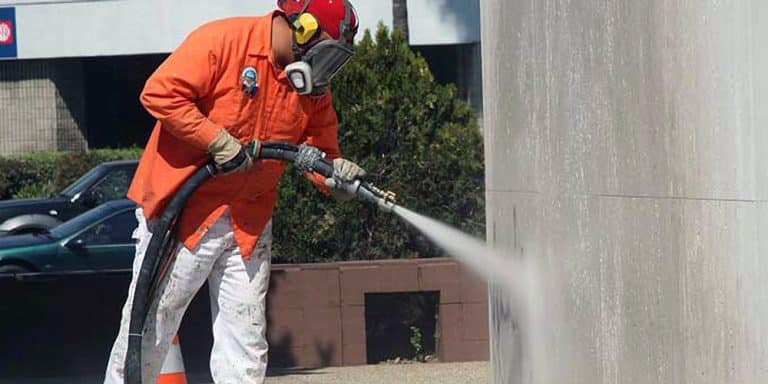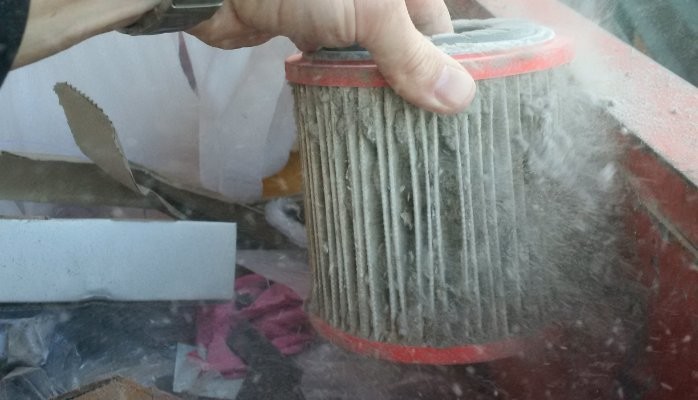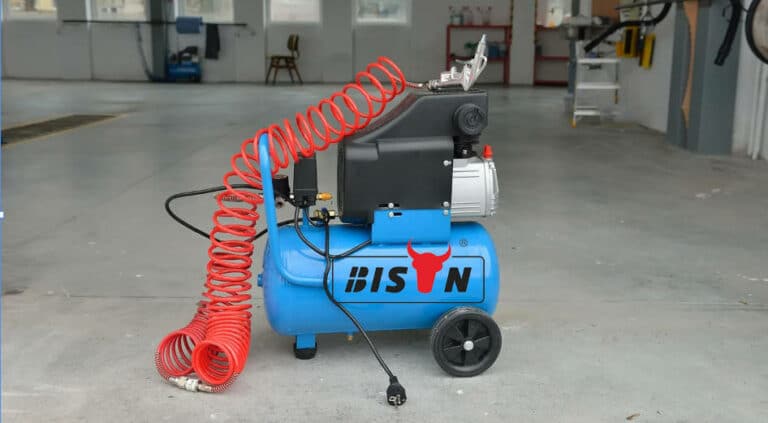air compressor application
Air compressors for off-roading
- Aug 9, 2023
A quality air compressor is the most important thing every new off-road enthusiast needs to purchase. Not only are they essential for inflating tires after they’ve been inflated, but – depending on the model – they can be used in differential lockers or even to power air tools.
As with many aftermarket equipment, air compressor selection can be overwhelming when determining the best option for your application and 4×4. But don’t worry; we’ve covered everything you need to know before purchasing a suitable air compressor for off-roading.
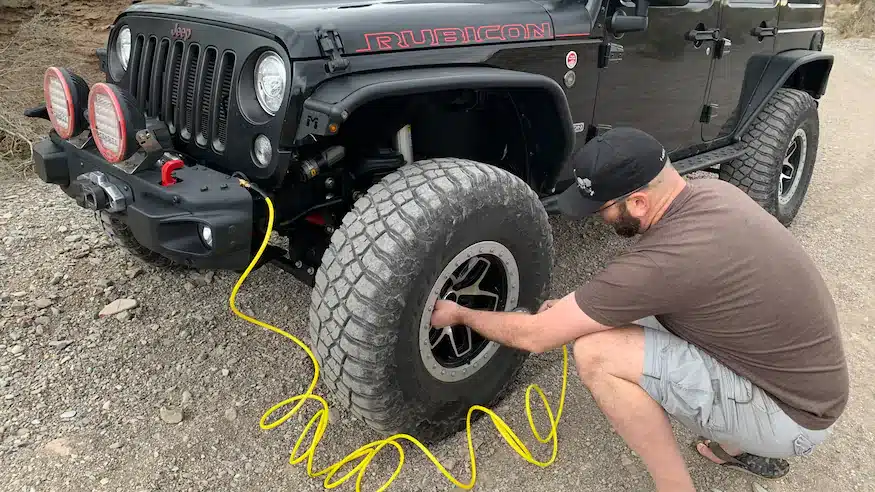
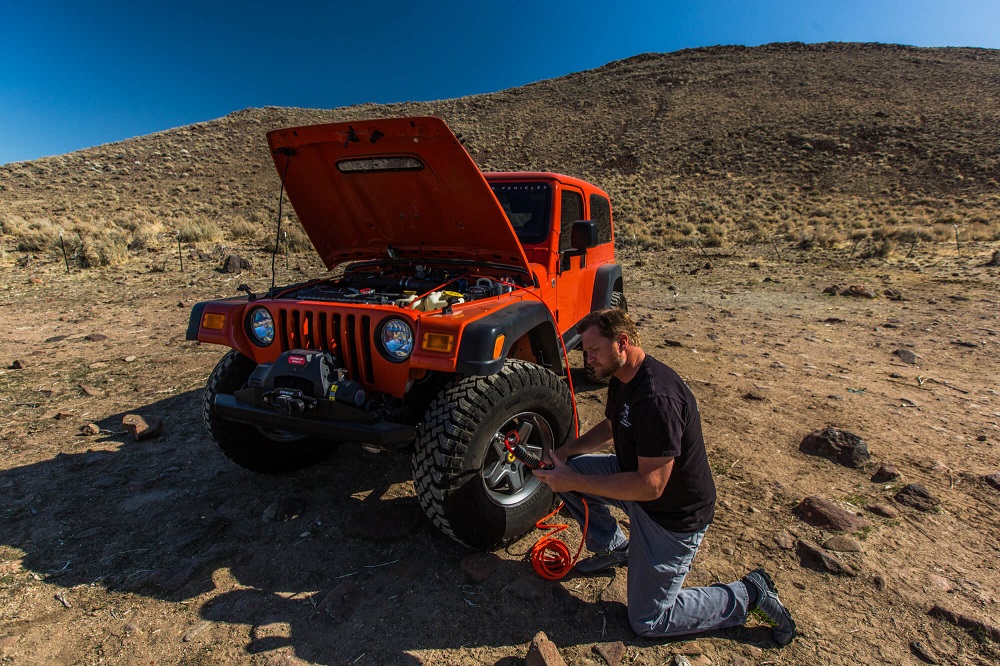
What is the purpose of the air compressor?
There are two main tire-related uses for an air compressor when off-roading. The most common use is after deflated tires to improve traction, prevent tire damage, and soften trail rides. In this case, you can use the air compressor to re-inflate the tires when leaving the trail for pavement or adjust the pressure mid-way to accommodate changing terrain. Another practical use is re-inflating tires after repairs, reinstalling tires, or adding more pressure to the spare tire.
Types of off-road air compressors
There are several air compressors available, both vehicle mounted and portable. A third option is a portable CO2 or nitrogen tank, popular with off-road and hardcore riders alike, which has a fast inflation rate because the gas expands quickly once it enters the tire.
On-board air compressors
The on-board air compressor is usually mounted in the engine compartment and connected to the battery. While that’s convenient because they’re always connected to power and ready to run, they’re also often useful for various purposes. They can power air brake pneumatic controls on differentials, while larger units can power pneumatic tools such as air impact wrenches to remove wheel lugs quickly.
Typically when an on-board system is installed, a switch is integrated into your 4×4’s dashboard or elsewhere on the vehicle so the differential can be locked from inside the cab – no more climbing out and twisting the hubs on the wheels.
Pros: Easy on the road; multiple uses, including powering air lockers and tools.
Cons: High initial installation cost; challenging to accommodate some engine bays without modifications; more expensive/time-consuming to upgrade and repair compressor.
Portable off-road air compressor
Portable off-road compressors are shipped in a bag or case and are connected to the battery terminals when required. More compact models plug into the 12V port but remember, these may not be enough for trucks or other 4×4 tires. But some powerful units offering more flexibility than on-board systems are good options.
For example, they can be easily used on other vehicles and provide easy access to tire valves without overstretching the air hose. Remember, each time you need it, you must unpack it, connect the battery, and let it cool before repacking. This can be a hassle and take up some of your running time on the track.
Pros: Relatively cheap; no installation required; the flexibility to quickly move equipment around.
Cons: Unpacking, use, and repacking are troublesome; they take up space in the car.
Portable CO2 and nitrogen tanks
Portable cylinders filled with carbon dioxide or nitrogen are similar to scuba diving cylinders (but smaller). They can be quickly inflated because the gasses are compressed more in the cylinder than oxygen and then rapidly collapse when blown into the tire swell. These can save a lot of time if you take turns a lot or have big tires that take a long time to inflate. However, the amount of carbon dioxide and nitrogen in the tank is limited, so you must bring a compressor as a backup.
Pros: Fast tire inflation on the track; easier to fill big tires.
Cons: High cost due to the need for another air compressor; a limited number of tire inflations; tank needs to be refilled and takes up space and adds weight
On-board or Portable?
Choosing an on-board or a portable air compressor may depend on whether you have airlocks on your axle differentials. If you do, it’s probably worth the cost and the on-board unit’s added convenience. We believe that if you do not have a gas cabinet, a portable compressor is more flexible and less expensive than the cost and time of installing an on-board model.
How big are your tires?
The volume required to inflate your tire will significantly determine your choice. You’d be bored waiting for an underpowered air compressor to inflate a 33-inch or 35-inch (or larger) tire. Also, if you exceed the duty cycle rating before inflation is complete, you must wait for the air compressor’s engine to cool down before inflating all of your tires.
Manufacturers often provide guidance on which models work with different tire sizes. Compressors that fit the tires of a large truck or jeep are usually connected directly to the battery terminals because the 12V outlet doesn’t have enough amperage.
But how patient are you?
More powerful compressors push more air per minute, inflating tires faster. So the quicker you want to inflate, the more powerful the air compressor you should get. If you want to speed up the process further, consider a CO² or nitrogen tank system.
Does it have a deflationary mechanism?
Inflating tires also takes time. Fortunately, some air compressor valve chucks have a built-in mechanism that relieves tire pressure without depressing the valve stem. This is a feature worth having. Some tire pressure gauges also have this feature. We have a set of self-flatters that deflate all of our tires at once, which is recommended if you do a lot of off-roading.
An air compressor is one of the first items to purchase for any off-roading because there are many benefits to inflating tires on rough terrain, and you always need a way to inflate them. While you can find compressors that will inflate your tires slowly, if you upgrade to larger tires in the future or wish to power other systems, we recommend purchasing a more powerful compressor to save time. Either way, an air compressor is an excellent investment that you’ll always use on the track.
Understanding the parts of an air compressor for off-roading
Below is an overview of the various components of an air compressor for off-roading. We’ve included pressure, duty cycle, and airflow ratings to determine which unit is best for your vehicle and your needs.
Reciprocating air compressors for off-road use have an electric motor that powers the pistons in the compression mechanism.
Compression mechanism
The compression mechanism consists of a valve that allows air to be drawn into the cylinder. The piston then forces air through the air hose and into the tire. Repeat this cycle until the tire is inflated.
Air duct
Air hoses carry air from the compressor to the tires. Remember, it is essential to have a hose long enough to easily reach all tires when connected to the battery or 12V outlet.
Tire chuck
The tire chuck is part of the compressor that attaches to the valve stem. For compressors for off-road use, it is recommended that the chuck has a built-in bleeder and an in-line pressure gauge.
Power cord
A power cord or wire connects the compressor to a power source directly to the vehicle’s battery or via a 12V outlet.
Air compressor rating
Compressors for off-road use are generally rated according to the following parameters:
Tire size
Some manufacturers will indicate which air compressor is best for a given tire size. Typically, this depends on the compressor’s airflow capacity (measured in CFM).
Pounds per square inch (PSI)
This is the air force delivered by the compressor. PSI is crucial for running air tools, and most off-road air compressors provide enough pressure to inflate trucks and 4×4 tires.
Cubic feet per minute (CFM)
CFM indicates the amount of air that the compressor can supply per minute. This tells you how fast the compressor is inflating the tire. Run times depend on the duty cycle, and having a high CFM is critical to inflate large truck tires. If you are on a budget, the time savings of choosing a high CFM compressor over a low CFM compressor is worth it.
Duty cycle
Since the compressor cycles alternately on/off to prevent overheating, the duty cycle is the ratio of the on-off time required for a one-hour cycle. For example, a 50% duty cycle compressor can run for 30 minutes out of an hour. In hot conditions, the cooling time increases because the compressor heats up faster. If you purchase an air compressor that isn’t powerful enough for your tires, you won’t be able to fill them all up without letting them cool down.
Voltage
Air compressors for off-road use are usually 12 or 24-volt models. Larger compressors require higher voltages and deliver higher airflows and pressures.
For off-road tire inflation, the tire size rating is the most convenient metric for deciding which compressor to purchase. If there is no easy tire size guide, use other ratings to choose a unit that fits your needs.
So, we discussed everything you need to know before purchasing air compressors for off-roading.
In short, an air compressor is an essential equipment, mainly when off-road. Every travel enthusiast should have this tool on their bucket list.
air compressors for off-roading FAQs
What size air compressor do I need for off-roading?
To inflate your tires quickly and efficiently, it's best to look for an air compressor with a tank capacity of at least 6 gallons, ideally with a maximum PSI of 150 or higher.
Is 50 PSI too much for a 35" tire?
No, you can safely inflate your tires to 50 psi without any risk of blowing out. However, it is best to use the recommended pressure range of 35 to 60 psi to prevent potential damage to the tire.
50 PSI is more than enough pressure for 35-inch tires. This means you can take 50 PSI without causing any damage to the tire. If you're still worried about getting a low-pressure reading, you can always purchase tires with a higher PSI for more comfort and better traction.
Are portable tire inflators good?
There is no doubt that a portable tire inflator is worth the money for the following reasons:
Allows you to inflate tires as they are equipped with powerful motors quickly
It helps you save money as you can easily use them and inflate your car tires
They are lightweight and easy to move from one place to another
Portable air compressors require less maintenance, saving valuable time, money and effort
What is the difference between portable and stationary air compressors?
Portable air compressors are small enough to take with you and install anywhere you want. Stationary air compressors are static and have their power source.
How do I know if the air compressor I want is good quality?
You can check the brand of the air compressor. Check the brand name on the manufacturer’s website. Make sure you purchase from a reputable manufacturer like BISON.
If you have any enquiries about the BISON air compressor, we would love to hear from you.




